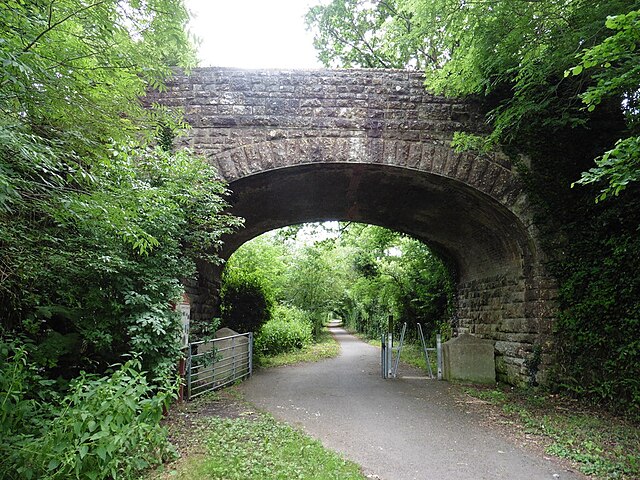Introduction
Henry was a railway navvy who helped build the railway line between Crewkerne and Yeovil. He and his wife, Agnes, lived at Hardington from about 1857 to the early 1860s, renting a cottage in Pen Lane from Albert Young of Manor Farm. Before marrying Agnes in 1857, Henry lived at West Lydford and Somerton. After their time at Hardington, Henry and his family moved to Chard, where he continued working as a railway labourer.
Early life
Henry was born in about 1835 at West Lydford, the first child of three children born to Isaac and Tryphena Gardiner.[1] His father, Isaac, held the respectable position of gamekeeper but had experienced hardship in his youth. When Isaac was seven, he and his family were removed from Broadwindsor to Somerton because they had become chargeable on the parish.[2] When he was 17, he was kept in Ilchester jail for a time and fined 40s for assault.[3]
By March 1851, the Gardiner family had moved to Long Sutton Road, Somerton, where both Isaac and Henry were employed as farm labourers. The reasons for Isaac’s apparent loss of his gamekeeper position are unknown, but he later regained it.
Marriage
While living at Somerton, Henry met and courted Agnes Tuttiett, who had a particularly difficult upbringing. Her mother, Mary Ann, died when Agnes was three, leaving her father, Thomas, to care for seven young children. Although Thomas was a watchmaker, he could not afford to keep the family together, and by June 1841, three of the children—Jane, Mary, and Thomas—were inmates of the Langport workhouse. Though Agnes may have avoided this fate, she faced difficulties when her father died in 1850 when she was just 15. What actually happened to her at that time is unknown, as she has not been found on the 1851 census.
On 19 October 1857, Henry Agnes married at Crewkerne parish church. Henry was recorded as a labourer in the marriage register, while Agnes signed her name, and Henry marked his with a cross.
Move to Hardington
Shortly after their marriage, Henry and Agnes moved to Hardington, where Henry worked as a navvy constructing the railway. Their daughter, Mary Jane, was born in the parish on 21 November 1858 and was baptised there on 5 May 1861.[4]
In April 1861, the family lived in “Pendomer Lane.” The census listed Henry’s occupation as a “Railway Packer,” while the baptism register recorded his occupation as a “Labourer on Railway.”
Court case
While living at Hardington, Henry got into trouble with the law for misappropriating a length of wood. At Yeovil County Police Court on 26 February 1858, he was charged with stealing a fence rail from Dennis Farnham, a yeoman of Hardington. PC Westcott testified to having found a portion of the missing rail in Henry’s house. In his defence, Henry claimed that Mr Young, the landlord of his cottage, had given him the rail to fence his garden. The case was then adjourned until the next day to allow Mr Young to testify. When the court reconvened, Young confirmed that he had given Henry a rail to part off his bedroom but said the rail presented in court was different. The magistrates fined Henry 10s, with damages of 1s and costs of 5s 6d, or alternatively three weeks hard labour.[5]
A newspaper report of the case identified Henry as a navvy of Hardington. The “Mr Young” in the case was Albert Young of Manor Farm, while Dennis Farnham lived at Prospect Farm.
Chard
Sometime after 5 May 1861, Henry and his family left Hardington and moved to Furnham near Chard, where Henry probably worked on building the branch line to the town.
By the mid-1860s, Agnes suffered with poor health, and she died on 18 October 1868 at the age of just 30 due to debility and dropsy.[6]
Later life
No evidence has been found of the later whereabouts of Henry and his daughter.
References
[1] The name is sometimes spelt Gardener or Gardner.
[2] Dorset Heritage Centre: PE-BDW/OW/3.
[3] Somerset Gaol Registers.
[4] Mary Jane Gardiner’s birth certificate; Hardington baptism register.
[5] Sherborne Mercury, 2 March 1858, p. 5.
[6] Agnes’s death certificate recorded her date of death as 18 October 1866. However, the Chard burial register recorded her burial as taking place on 15 October 1866.



